Post-WWII military veterans of the NFL
Here’s a who’s who of the post-World War II military veterans of the National Football League. I started writing this post back in 2010 and it is still under construction, but if you know of players who I haven’t added to the list yet, put them in a comment.
Ralph Heywood: After playing only five games for USC in 1943, Heywood was drafted by the Marine Corps and sent to the South Pacific aboard the battleship USS Iowa. Despite his short season, he was selected as an All American end and punter. Following the war, he played five seasons for both the NFL and AFL before returning to active duty during the Korean War. He commanded the 26th Marines during Vietnam. Heywood remained in the Marines for 32 years before retiring as a colonel, becoming the only NFL player to have served in World War II, Korea, and Vietnam.
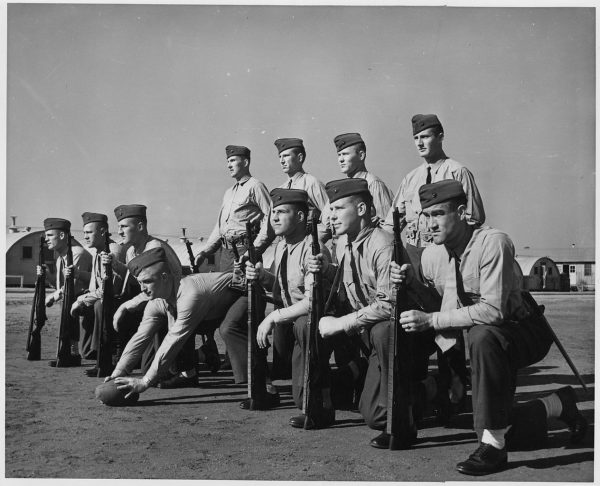
Eddie LeBaron began his professional football career after serving as a platoon commander in 1st Battalion, 7th Marines during the Korean War. He earned the Bronze Star with Combat “V” and two Purple Hearts during the Battle of the Punchbowl, and was the Rookie of the Year in 1952. He was selected to four Pro Bowls over his 11-year career.
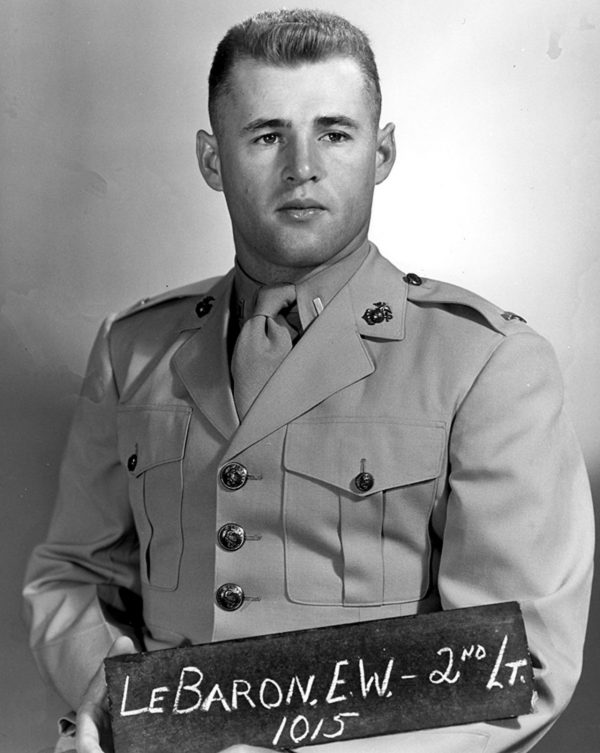
Pro Football Hall of Famer Mike McCormack was named to the Pro-Bowl in his rookie year with the NFL’s New York Yanks, then spent two years in the Army, serving in Korea. When he came back, he found out that he had been traded to Cleveland Browns. Coach Paul Brown called McCormack “the finest offensive lineman I have ever coached.”
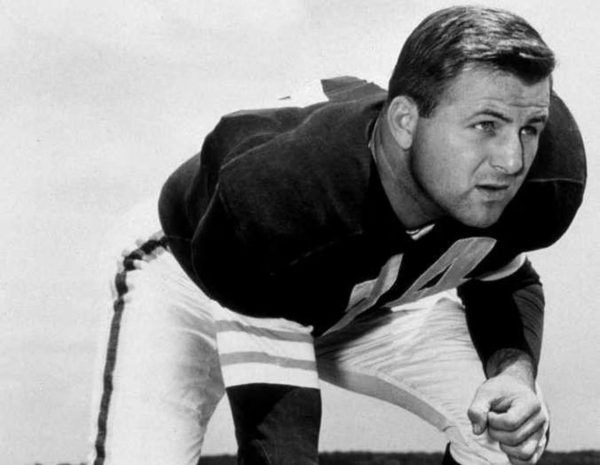
One of the players traded for McCormack was Don Shula, who is more famous for coaching the undefeated 1972 Miami Dolphins than he was as a defensive back. Shula joined the Ohio National Guard and although his unit was activated during Korean War, he served stateside.
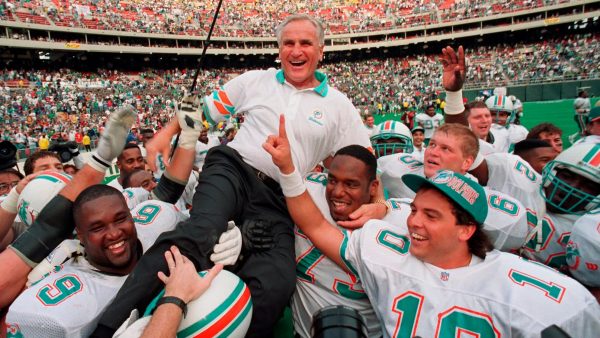
Speaking of coaches, Al Davis was drafted after his college deferment expired and Fort Belvoir (Va.) picked Pfc. Davis to coach their football team. Had Davis’ soldiers not lost to the Quantico Marines, led by quarterback and future College Football Hall of Fame coach Hayden Fry, Fort Belvoir would have played in the 1953 Poinsettia Bowl. Davis went on to become head coach, general manager, and owner of the Oakland/Los Angeles Raiders.
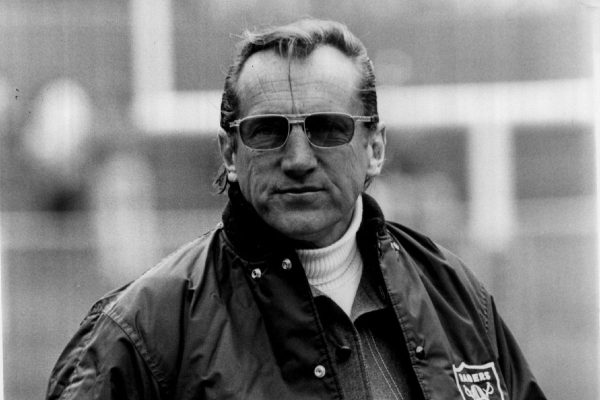
In May of 1957, Baltimore Colts sure-handed receiver Raymond Berry enlisted in the Maryland National Guard. Pvt. Berry caught 47 passes from Johnny Unitas that year for a league-leading 800 receiving yards. Berry served in anti-aircraft battalions and Company B of the 16th Special Forces Group during his 10-year Hall of Fame career, continuing as a coach (taking the New England Patriots to the Super Bowl in 1985) after setting league records for most receptions and receiving yards.
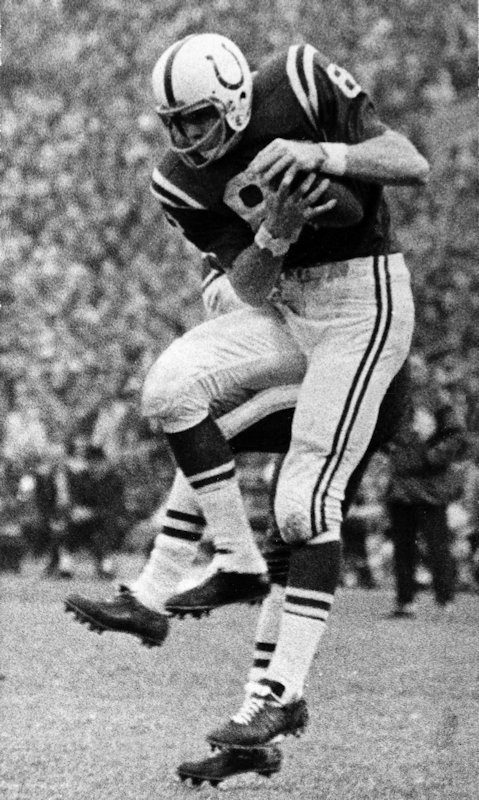
Erich Barnes was a target for future Hall of Fame quarterback Len Dawson while at Purdue University. He also did a stint in the Marine Corps Reserve, and spent 14 years in the NFL as a defensive back. Barnes was a first-team All-Pro selection in 1961 and played in six Pro Bowls.
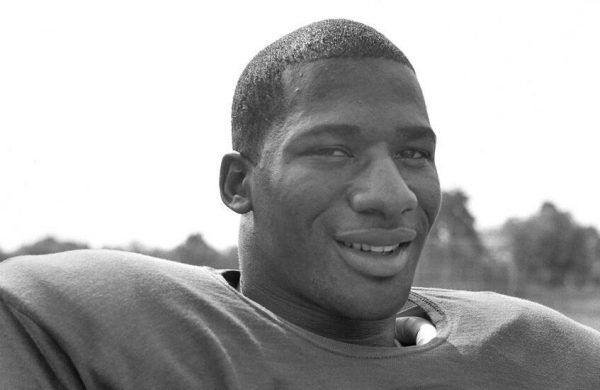
Joe Bellino earned the Heisman Trophy in 1960 for the Naval Academy then began his active service commitment. Learned that he was drafted by both the NFL’s Washington Redskins and the AFL’s Boston Patriots while he was in the South China Sea in 1961. His ship was in Cuba during the Missile Crisis and he deployed to Vietnam three times. He played three seasons with the Patriots and served a total of 29 years in the Naval Reserve before retiring as a captain. Passed away in 2019.
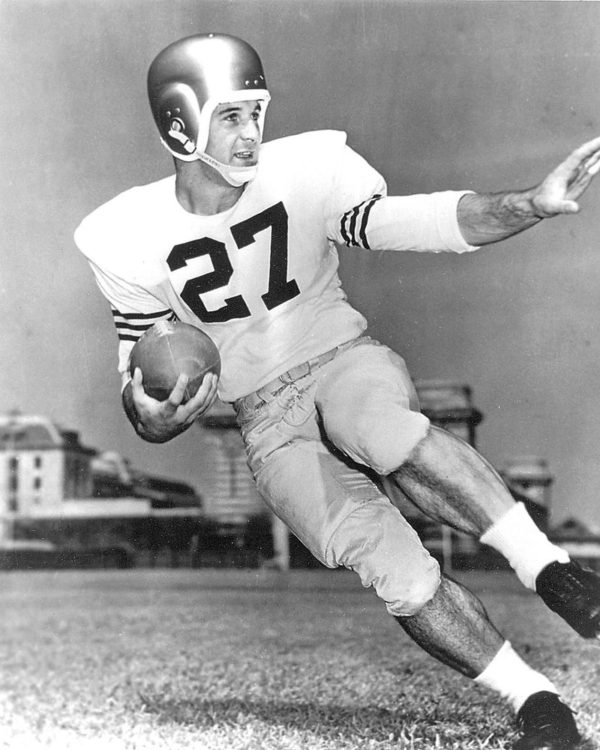
Paul Hornung was one of many football players who served in the National Guard during the Cold War. When the Communists began building the Berlin Wall in 1961, “The Golden Boy” deployed to Fort Riley, Kansas and could not leave the state. Coach Vince Lombardi knew John F. Kennedy personally and asked the president if he would release Hornung to play in the NFL Championship Game against the Giants. The commander-in-chief approved Lombardi’s request, and Hornung went on to score 19 points as the Packers won.
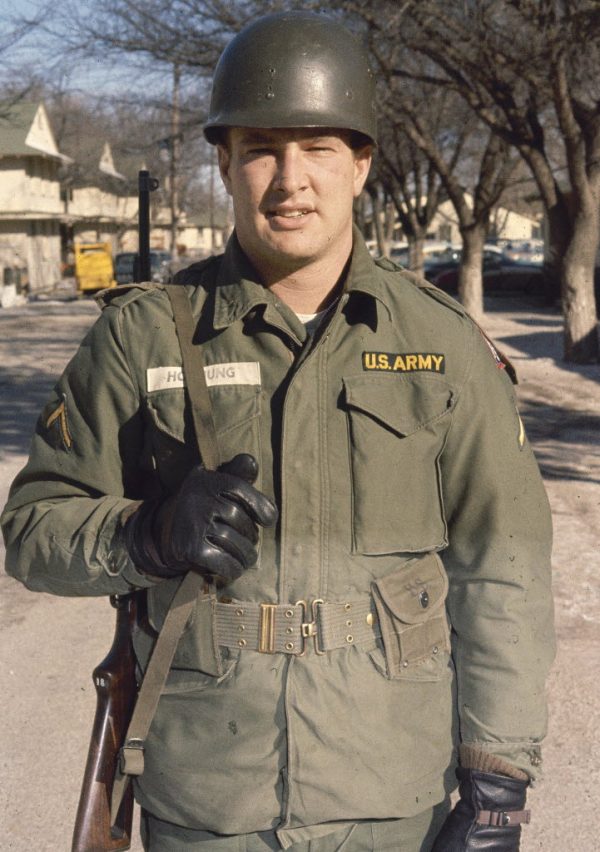
When Hornung was called up in November, so were fellow Packers Ray Nitschke and Boyd Dowler. All were part of the 32nd Infantry Division. Nitschke and Dowler couldn’t make any of the practices through the week, but were able to get furloughs to play on Sunday.
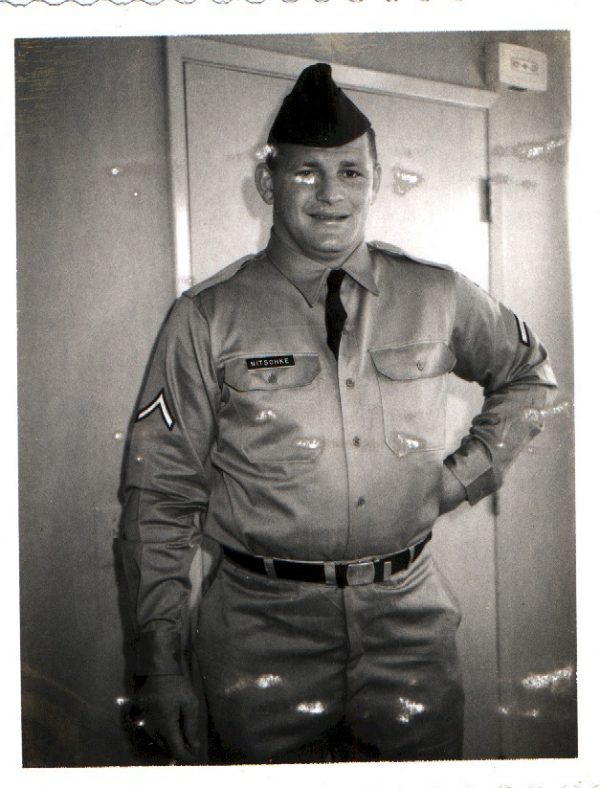
The Cowboys drafted Naval Academy graduate Roger Staubach in 1964, but the Heisman Trophy-winning quarterback first had to fulfill his military commitment. Staubach served on active duty for four years, including a one-year tour in Vietnam, where he served as a supply officer. After serving his country, “Captain Comeback” went on to lead Dallas to four Super Bowls – winning two – over his 11 year Hall of Fame career.
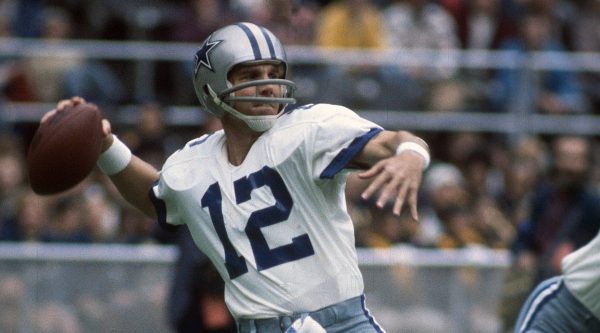
Don Steinbrunner played eight games at tackle for the Cleveland Browns in 1953 before being called to fulfill his ROTC service commitment. He was assigned to the Air Police and later became a navigator and assistant football coach at the Air Force Academy. Steinbrunner was wounded on a mission in Vietnam and offered a safer assignment — which he turned down. On July 20, 1967, the C-123 carrying Major Steinbrunner and five other airmen was shot down over Kontum, killing all on board.
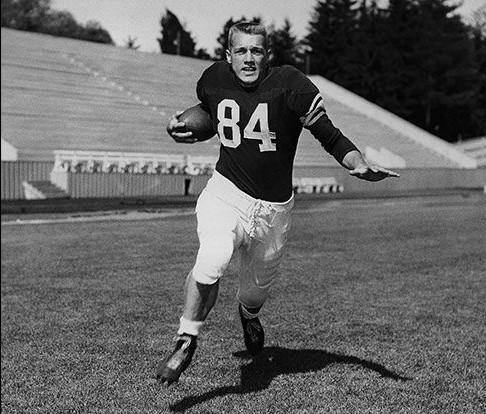
Bob Kalsu: Drafted in 1968 by the Buffalo Bills and was the team’s rookie of the year. In order to complete his ROTC commitment, Kalsu became a second lieutenant and went to Vietnam as a member of the 101st Airborne Division. He was killed in action on July 21, 1970 near the A Shau Valley.
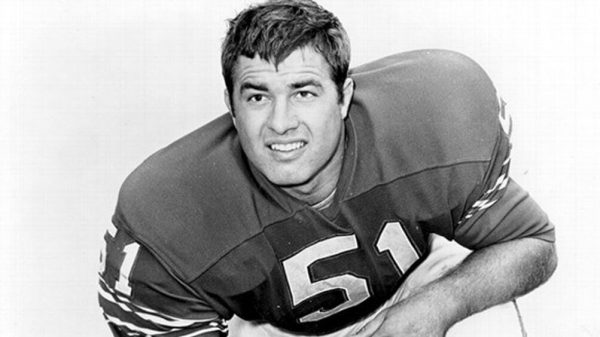
Kalsu and Steinbrunner are the only NFL veterans to be killed in combat during the Vietnam War.
Andy Russell: After being drafted by the Steelers in 1963, Russell played one year before joining the Army from 1964-1965 and serving as a lieutenant in Germany. Russell went on to be a seven-time Pro Bowl selection at outside linebacker.
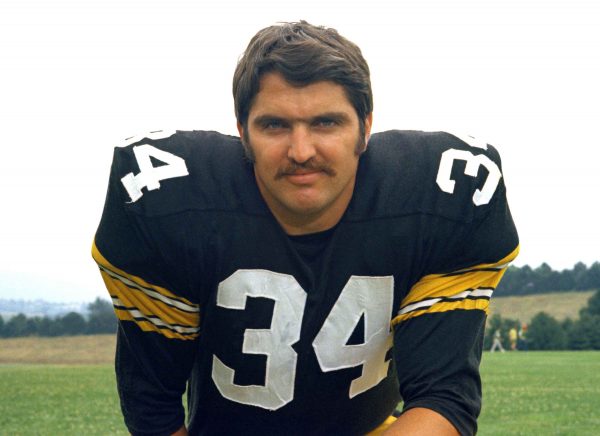
Charlie Johnson joined the Army out of high school and served as an MP in Vietnam before going on to become a three-time Pro Bowler as a defensive tackle.
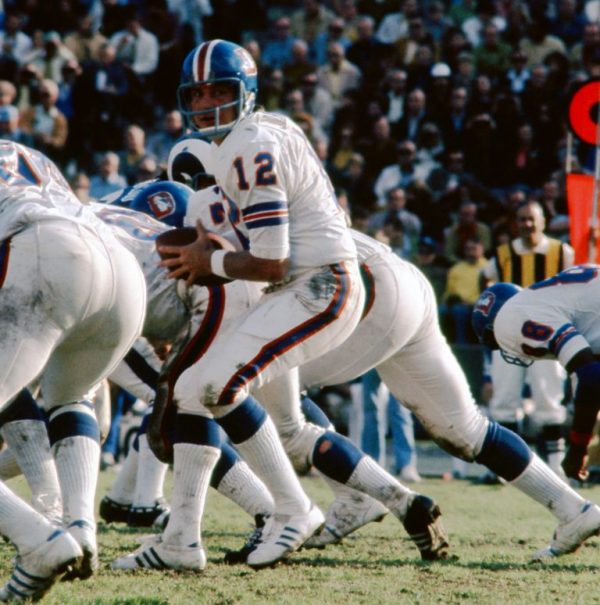
Charley Johnson was drafted by both the AFL’s Chargers and the NFL’s Cardinals, deciding on St. Louis and became their starting quarterback. An ROTC cadet during college, Johnson continued his master’s and doctorate studies while he was playing pro football. He led the league in completions, attempts, passing yards, and interceptions in 1964. He worked for NASA as a second lieutenant in the Army Reserve
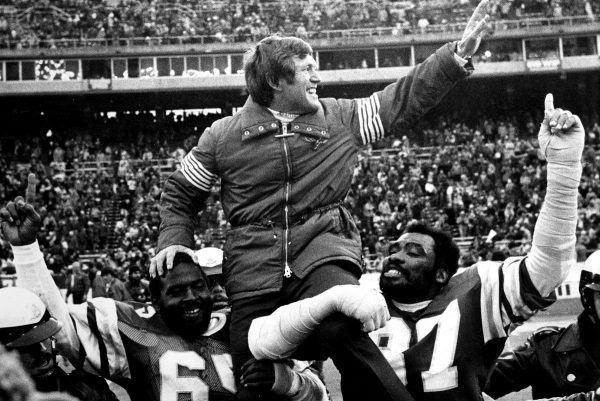
Woody Campbell was an All-American standout at Northwestern University and an All-Star running back with the AFL’s Houston Oilers in 1967, but in 1969 he deployed to Vietnam with the 1st Infantry Division as a military policeman.
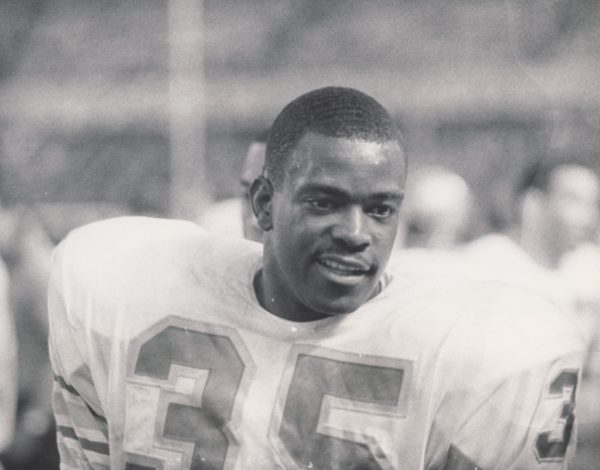
Drafted in the 16th round of the 1968 NFL draft, Rocky Bleier figured that he would be sent to the National Guard or Reserves like many of the other NFL draftees, but he was instead sent to Vietnam with the 196th Light Infantry Brigade. Bleier was hit by rifle fire and grenade shrapnel, and informed by his doctor that he would never play football again. However, he eventually returned to become the Steelers’ fourth all-time rushing leader and won four Super Bowls.
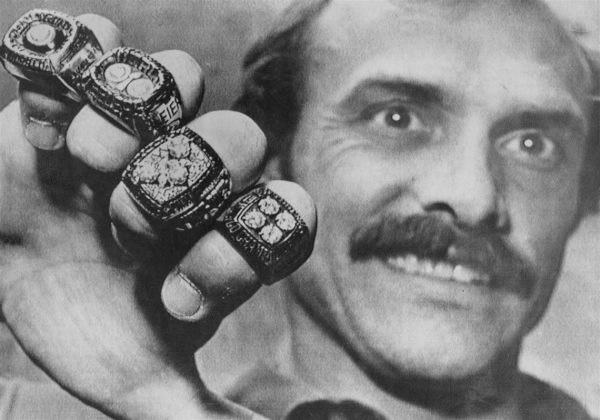
Before breaking nearly receiving record at Colorado State University, Willie Miller volunteered for two tours in Vietnam with the Special Forces, earning the Silver Star, Soldier’s Medal, and the Purple Heart. Despite being 28 years old during his rookie season, Miller played seven years at wide receiver and went to the Super Bowl with the Rams.
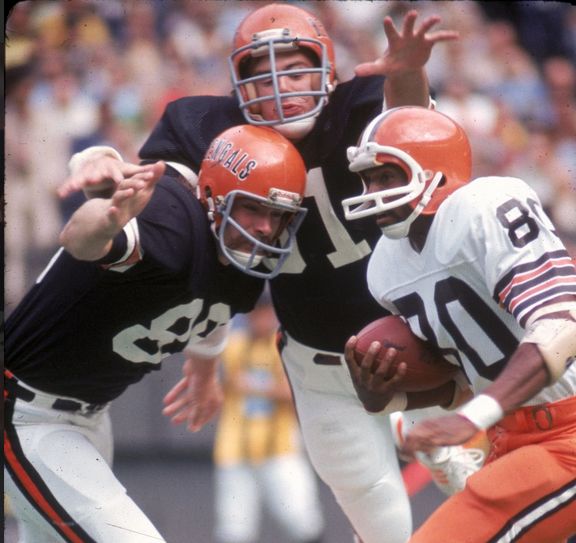
Charlie Joiner, Willie Betlon, Gary Bugenhagen, Ernie Cheatham, Jim Clack, Moses Denson, Glen Ellison, Alvin Hall, Cliff Harris, Cornelius Johnson, Howard Kindig, MacArthur Lane, Gary Larsen, Joe Don Looney, Mike Montler, Don Talbert, and Herb Travenio are also listed as having served in or during Vietnam.
Rush Brown joined the Army out of high school and since the Army didn’t play football in Germany, he was able to play for the Air Force. The 60th Ordnance Group soldier was the 1975 Player of the Year in Air Forces Europe. He then goes to Ball State University and is named to the Pro Football Writers’ Association’s All-Rookie team when he joins the St. Louis Cardinals in 1980.
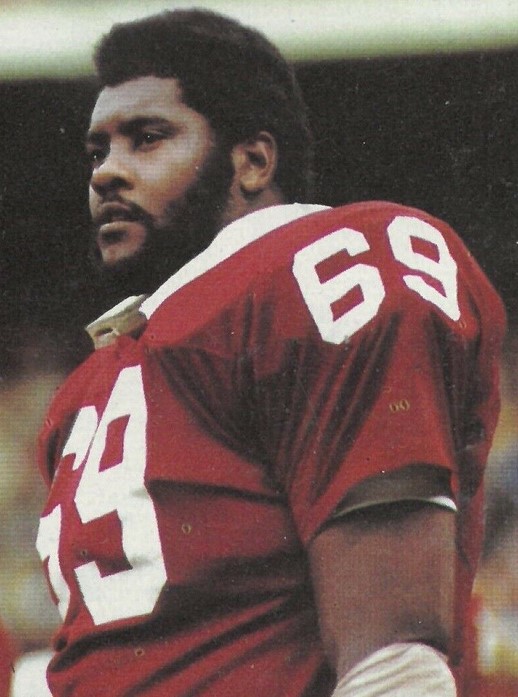
Phil McConkey was the most valuable player in the Holiday Bowl as the Naval Academy beat Jim McMahon and Brigham Young University. He flew helicopters for five years and decided he would try playing football. He approached longtime Navy scout Steve Belichick who told him no one would look at him unless he could run a sub 4.8-second 40-yard-dash. When McConkey runs a 4.4 Steve calls his son Bill, who just became the New York Giants’ defensive coordinator. The 27-year-old begins an six-year career as a wide receiver and punt/kickoff returner.
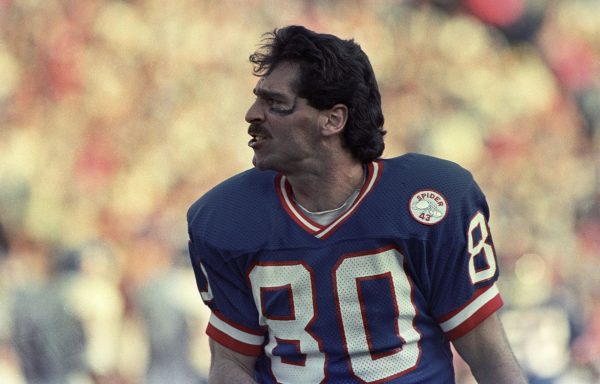
Chad Hennings graduated from the Air Force Academy in 1988 and became an A-10 pilot. He flew 45 combat missions over Northern Iraq and served 10 years as a reservist while he played football for the Dallas Cowboys, winning three Super Bowls.
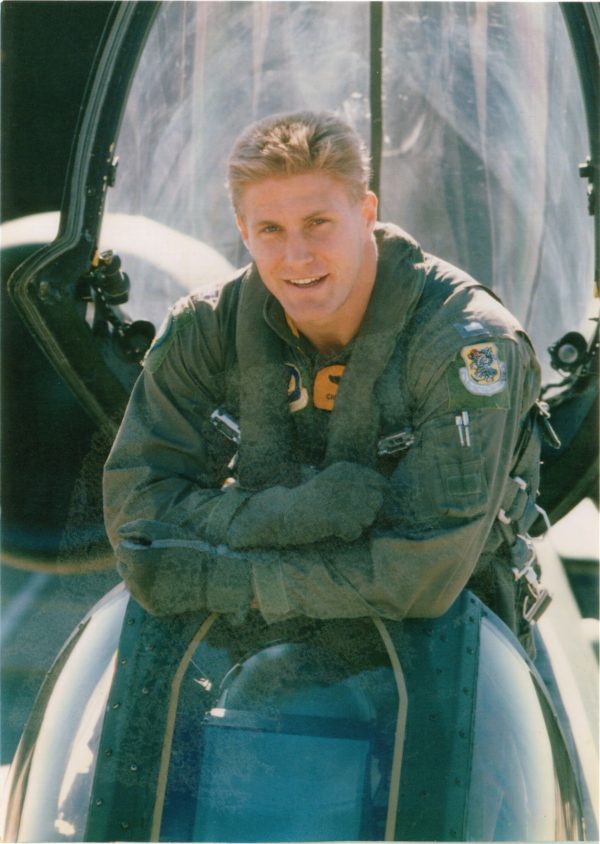
Navy tailback Napoleon McCallum was a two-time All American and set the NCAA record of 7,172 all-purpose yards. After graduating in 1985 the Navy stationed him close enough to Los Angeles that McCallum was able to play for the Raiders when he wasn’t on duty, splitting time with Marcus Allen. The Navy transfered him to another ship in 1987 and he spent the next three seasons away from football. I remember watching his career come to an end on Monday Night Football in 1994 and his leg was so badly dislocated that it almost needed to be amputated. Annapolis retired his uniform number 30 and he is a member of the College Football Hall of Fame.
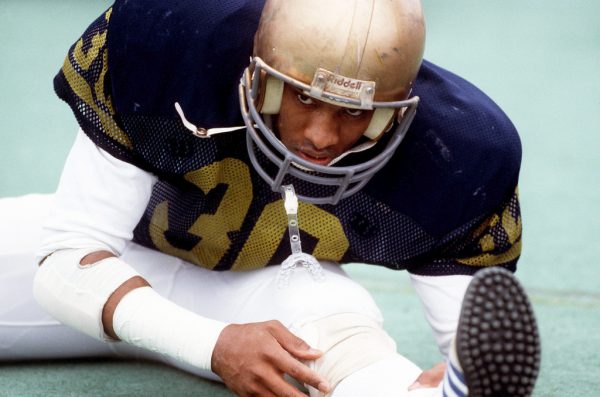
Before becoming a Hall of Fame linebacker, Kevin Greene joined the ROTC program while at Auburn University. After earning his commission, he served 16 years in the Army Reserve, ultimately reaching the rank of captain. Greene was my favorite football player in the 1990s and the sackmaster told me he earned jump wings, but was just a “five-jump chump” (meaning he didn’t have any airborne experience after the five training jumps at Fort Benning) and the long hair didn’t happen until after the Army.
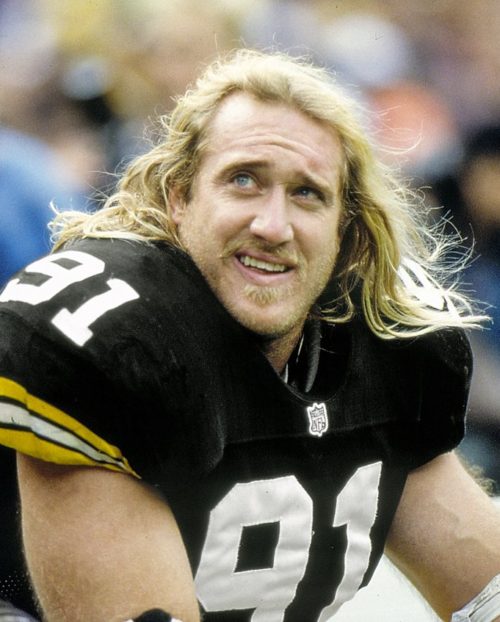
After the 9/11 terrorist attacks, Arizona Cardinal defensive back Pat Tillman finished the season, then turned down a three-year, $3.6 million contract extension to join the Army. Tillman and his brother — a minor-league baseball player — attended basic training together then joined the 75th Ranger Regiment. Pat participated in the 2003 invasion of Iraq, then returned to attend Ranger School. He was killed in action during a deployment to Afghanistan.
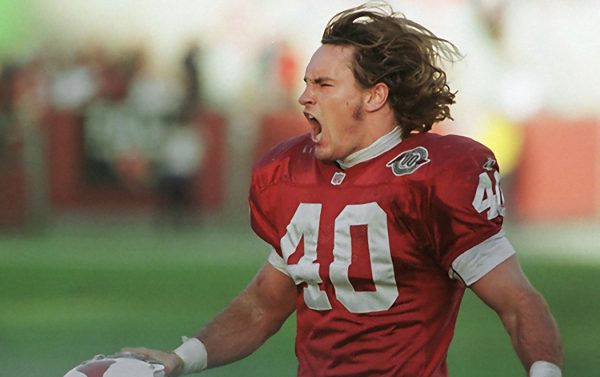
All American fullback Kyle Eckel ran for over 1,000 yards in both his junior and senior years at the Naval Academy, becoming one of the top runners in Navy history. He was MVP of the Army-Navy Game two years in a row and he played three seasons in the NFL after being involuntarily discharged from the Navy.
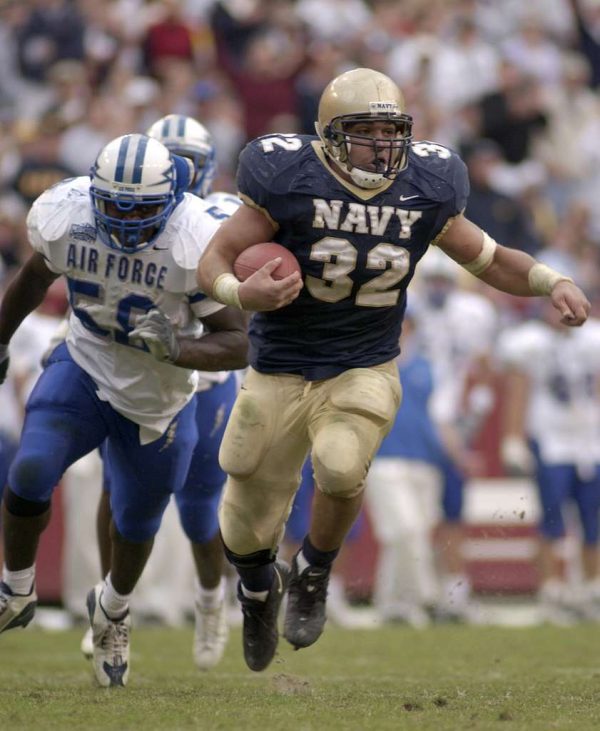
After nine seasons in the NFL — winning Super Bowl XLV with the Packers — Daryn Colledge retired and enlisted in the Idaho National Guard. The former lineman served as a crew chief on a Blackhawk medevac helicopter and deployed to Afghanistan in 2018.
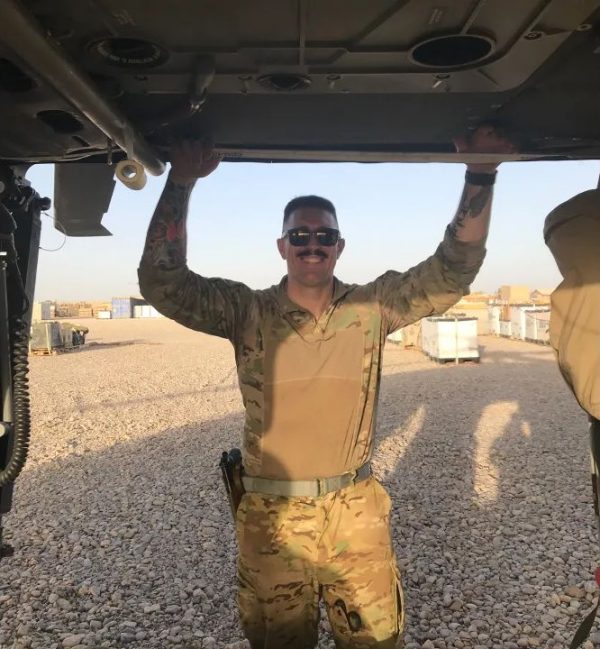
Air Fore Academy’s Chad Hall rushed for 275 yards in a 2007 game against Army, setting a record that still stands today. During his senior year Hall finished third in the nation in all-purpose yards and was a Heisman finalist. After graduating he served as a maintenance officer, then went into the reserves and began a five-year career as an NFL wide receiver. He .
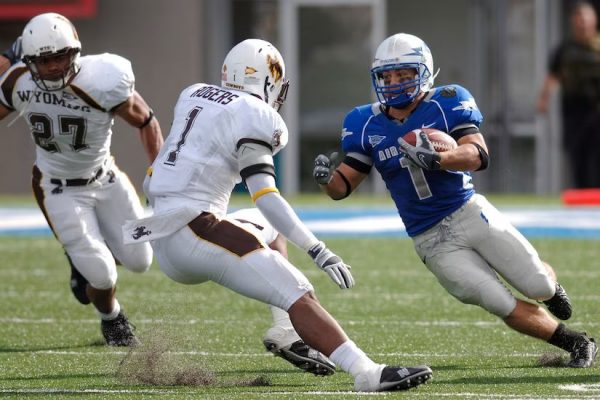
Sid Brooks: The longtime equipment manager for the San Diego Chargers served in the Air Force during both the Korean and Vietnam wars before retiring as a Senior Master Sergeant.
John Butler: Served four years with the Marine Corps, deploying to Vietnam in 1965 and seeing combat. He played football for the University of Illinois for a year after returning, but a knee injury ended his football career. Butler eventually became the San Diego Chargers’ general manager.
Les Steckel: Enlisted in the Marines and served in Vietnam with the infantry. Served for 30 years before retiring as a Colonel. Played on the Marines’ Quantico football team after Vietnam. Worked as a coach or coordinator for numerous college and NFL teams for several years.
Joe Haering: Received his commission after graduating from Bucknell – where he earned all-conference honors at linebacker – and served as a company commander in Vietnam. Haering would go on to become an assistant coach for numerous teams in the NFL.
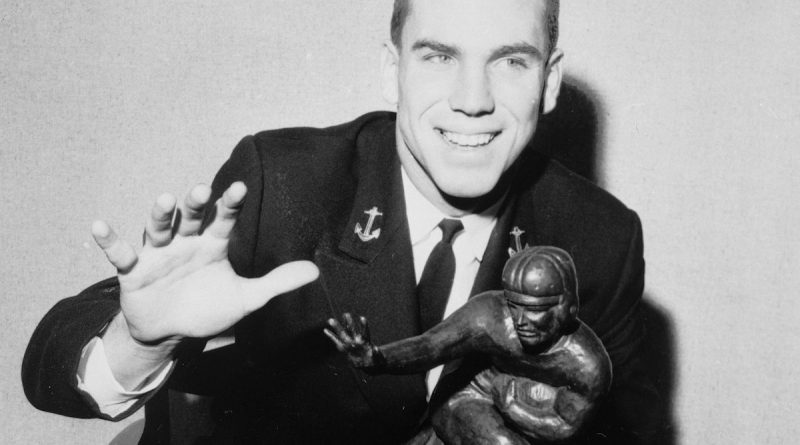
How about Artie Donovan from the 50’s colts
I can’t believe they left out Art “Fatso” Donovan. Art served in the Pacific during WW2 and returned to play for the Colts.
You forgot Joe Don Looney.
Warren Spahn, a combat engineer officer in World War II, wounded and decorated.
I can’t find any information on a “Dan” White.
Dan White played one season with the Chargers, I think. He is a Vietnam vet and was severely wounded there.
Thanks for catching that John.
Chris
Andy Russell of the Pittsburg Steelers
Never mind. I only saw Veterans of the NFL.
What about Pat Tillman?
Staubach returned to the NFL in 1969 and would PLAY IN four Super Bowls, WINNING TWO and be inducted to the Hall of Fame.